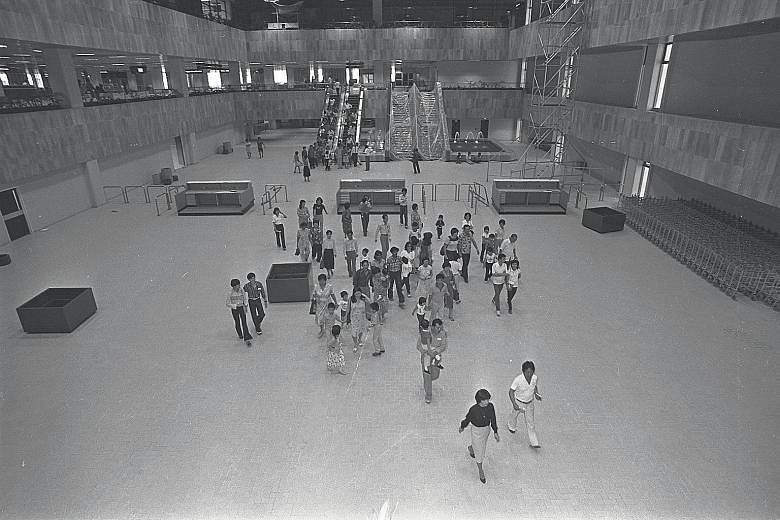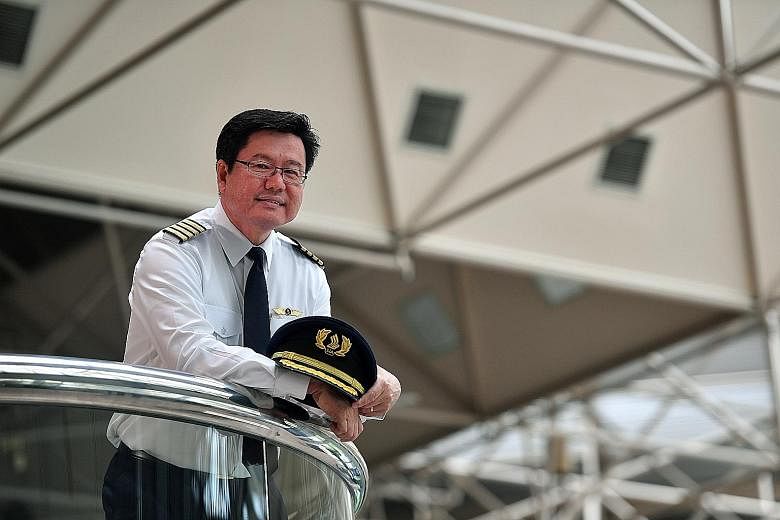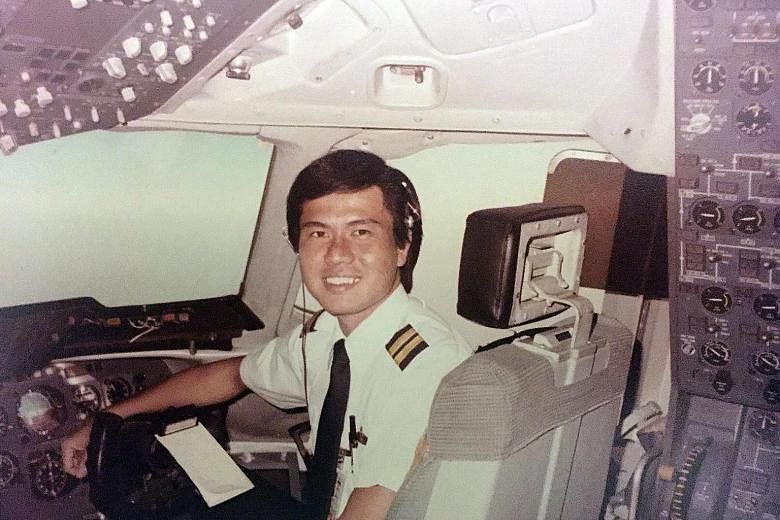There was little chatter over the air traffic control radio as the historic flight approached Changi Airport at sunrise.
"We had the whole sky to ourselves," recalled Singapore Airlines Captain Gan Kim Hock.
It was July 1, 1981, and he was first officer on Flight SQ101 - the very first scheduled commercial flight to land at the spanking new $1.5 billion Singapore Changi Airport. "I was just a new first officer living my dream of flying and, there I was, making history with Changi Airport," Capt Gan told The Straits Times.
About an hour earlier, the Boeing 727 aircraft had taken off from Kuala Lumpur airport, with 140 "excited" passengers on board.
In the cockpit with him were Captain T.K. Pow and Assistant Chief Flight Engineer P.H. Cheah.
"It was fantastic... The first thing we saw was the iconic control tower at Changi. Looking down at the airport and the space around the control tower and the terminal building, we could see it was going to expand a lot more," said Captain Gan, 59.
It was a far cry from Paya Lebar Airport, which opened in 1955 and was, by then, bursting at its seams.
Even as he foresaw further expansion, "never in my wildest dreams did I expect that Changi would be what it is now", Capt Gan said. And he cannot imagine what it will be like in 10 to 12 years, when Terminal 5 (T5) is ready.
Thirty-six years after SQ101 and from the 4.3 million passengers handled in the first six months after its opening, Changi Airport marked a significant milestone last month when it crossed the one-billion-passenger mark.
It was a proud moment for Mr Ho Beng Huat, 69, who joined the Civil Aviation Authority of Singapore before Changi Airport's opening and is now a Changi Airport consultant.
The growth has surprised everyone, he said, including the foreign consultants who drew up Changi's plans.
"The whole masterplan was wrong... They grossly underestimated the potential," Mr Ho said, adding that the projection was for Changi's annual handling numbers to eventually grow to about 30 million passengers. Last year, the airport handled almost 60 million passengers, he said.
The numbers continue to rise, with the latest data showing a 7.8 per cent growth in traffic last month to 5.17 million passengers, compared with April last year.
With a fourth passenger terminal opening later this year and plans for T5 in full swing, the expansion will more than double Changi's annual handling capacity to 150 million passengers eventually.
Mr Ho is confident that the capacity will be utilised as demand for air travel is expected to continue to grow strongly.
The challenge for Changi Airport will be to ensure that passenger comfort and convenience are not compromised when T5 - which will eventually be bigger than T1, T2 and T3 combined - opens, Mr Ho said.
"T5 is a totally different ball game and will present new challenges we are not familiar with... We don't have all the answers yet, but we will," he said.
Changi is working with its partners, including ground-handling firm Sats, to push automation and do-it-yourself processes that will allow the airport to rely less on manpower.
Veteran Sats staff member Augustine Lim, 53, who works with airlines to ensure that aircraft are loaded correctly, is excited about the future.
He said: "Changi has come a long way in 36 years. It is much busier now, which adds to operational challenges. But automation and technology, which have totally transformed the way we work, have helped us manage the higher loads."






